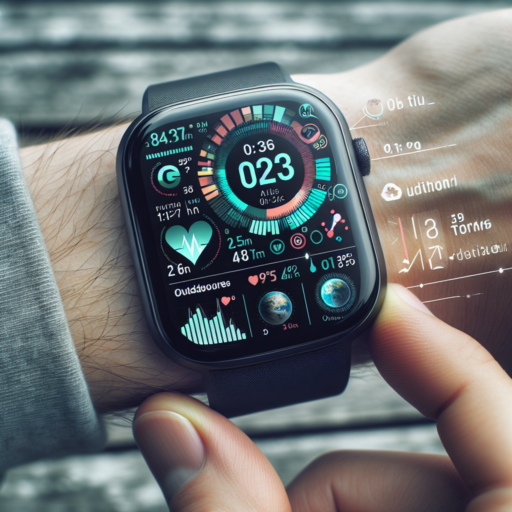How do I display the temperature on my Apple Watch face?
Displaying the temperature on your Apple Watch face is a convenient way to keep up with the weather without needing to pull out your phone. Whether you’re getting ready for a day out or just curious about the weather, your Apple Watch can provide you with timely temperature updates right on your wrist.
Choose the Right Watch Face
First, it’s important to select a watch face that supports temperature display. Faces like Infograph Modular, Modular Compact, and Solar Dial offer integrated complications for weather elements, including temperature. Once you’ve picked a compatible watch face, customizing it to show the temperature is straightforward.
Customizing Your Watch Face for Temperature
To customize your Apple Watch face with the temperature, firmly press on your current watch face to enter the customization mode. Swipe left or right to choose your desired face, then tap on ‘Edit.’ From there, swipe to the ‘Complications’ screen. Tap on a complication slot, then scroll through the options until you find ‘Weather’ and tap it. Choose the temperature option to display it on your watch face. Confirm your choice, and you’re all set to view the temperature with a glance.
Remember, your Apple Watch needs to be connected to your iPhone to regularly update the temperature. Make sure you have the Weather app installed on your iPhone and that it’s allowed to refresh in the background for the most accurate temperature displays on your watch face.
Why is the weather not showing on my smart watch?
When you find that the weather is not displaying on your smartwatch, it can be both puzzling and frustrating. This issue can often be traced back to a few common causes. Understanding these can help you quickly troubleshoot and resolve the problem, ensuring your smartwatch keeps you up-to-date with the latest weather forecasts.
Troubleshooting Connectivity Issues
One of the primary reasons the weather may not show on your smartwatch is due to connectivity issues. Your device needs a stable connection to your smartphone or Wi-Fi to receive weather updates. Ensuring your smartwatch is correctly connected and within range of your phone or a reliable Wi-Fi network can often fix this issue.
Checking Location Services
Another critical factor to consider is whether location services are enabled on both your smartphone and smartwatch. Weather apps typically require access to your current location to provide accurate weather information. If location services are turned off, your smartwatch may not display weather data as expected.
Remember, keeping your smartwatch’s software up to date is crucial for its overall performance, including the weather feature. Updates often contain fixes for bugs that could be preventing the weather from displaying. Regularly check for and install any available updates for your device.
How do I get my Apple Watch to track my temperature?
Tracking your body temperature can be a vital part of monitoring your health. While the Apple Watch is equipped with an array of sensors, it’s important to clarify that as of my last update in 2023, the Apple Watch itself cannot directly measure body temperature. This limitation is due to the absence of a dedicated temperature sensor in the device. However, users seeking to track their temperature can explore a workaround that involves using compatible third-party devices and health apps that can synchronize data with the Apple Health app, which is seamlessly integrated with your Apple Watch.
Utilizing Third-Party Thermometers
Begin by selecting a third-party smart thermometer that is known for its compatibility with the Apple Health app. These thermometers usually come in various forms, such as ear, oral, or wearable devices. Once you’ve found the perfect match, ensure it’s properly set up and synced with your iPhone. This involves downloading the manufacturer’s app and following on-screen instructions to connect it to the Apple Health app. Through this integration, temperature readings can be automatically imported and viewed directly through the Apple Health dashboard on your Apple Watch.
Monitoring Temperature in the Apple Health App
After establishing a connection between your smart thermometer and the Apple Health app, access your temperature data is straightforward. Launch the Apple Health app on your iPhone, navigate to the «Health Data» tab, and select «Body Measurements,» where you’ll find the «Body Temperature» option. Here, all recorded temperature readings from your synced devices will be displayed. By configuring your Apple Watch to show Health app statistics, you can monitor these temperature trends at a glance, enabling you to stay informed about your health metrics without requiring direct Apple Watch temperature tracking capabilities.
Why is Apple weather not working?
Encountering issues with the Apple Weather app can be frustrating, especially when you’re trying to catch up on the latest forecasts. There are several reasons why Apple Weather might not be functioning properly on your device. Understanding these reasons can help troubleshoot and potentially resolve the issue, ensuring you stay informed about the weather conditions.
Internet Connection Issues
One common reason why Apple Weather may not be working is due to internet connection problems. The app requires a stable internet connection to fetch the latest weather data. If you’re experiencing connectivity issues, this could prevent the app from updating. Checking your Wi-Fi or cellular data connection and ensuring it’s stable is a crucial first step.
Location Services Disabled
The Apple Weather app relies heavily on your device’s location services to provide accurate weather forecasts. If these services are turned off, the app might not work as expected. Ensuring that location services are enabled for the Weather app in your device settings can help resolve this issue.










